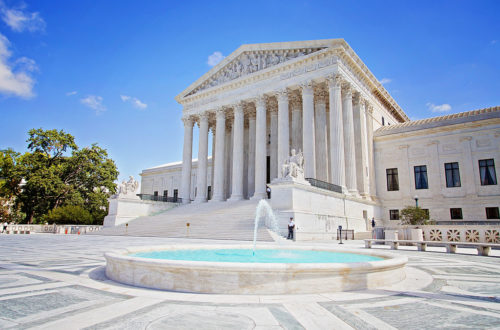China continues to progress towards its major goal of significantly strengthening IP protection within its borders. Last year it announced several proposed amendments to its patent laws. In January 2020 China and the US signed the Economic and Trade Agreement between the Government of China and US (published 16 January 2020 –“Trade Agreement”), which detailed several areas in which China agreed to reform its laws, including in the areas of trade secrets and confidential information, pharmaceutical-related IP, piracy and counterfeiting, and enforcement.
Just a few days ago on April 20th, 2020, the Chinese National Intellectual Property Administration (CNIPA) published a long and comprehensive plan (“Plan”) on how to strengthen the protection of intellectual property in areas such as patents, trade secrets, trademarks, copyrights and plant varieties. Although many of the improvements in this Plan overlap with or are consistent with those outlined in the Trade Agreement, this new Plan is also much more comprehensive and really signals China’s overall commitment to overhauling and rapidly improving its IP system from multiple angles.
The Plan include several items that are of particular interest to technology companies with patent portfolios and trade secret concerns. Life science companies will be pleased to see patent term extension as well as stronger pharmaceutical patents and enforcement mechanisms. Counterfeits are another major concern, and the list below also devotes a significant portion to that area.
Below we have selected and summarized certain parts of the Plan that we think are more relevant and important to technology companies. The dates in parentheses indicate the target completion date for rolling out the new laws.
Reviewing and revising Chinese Patent Law including
a. Introducing a punitive compensation system for infringement;
b. Providing patent term extension;
c. Strengthening protection of pharmaceutical patents;
d. Further revising the patent examination guidelines; and
e. Reducing the invention patent examination cycle to less than 20 months (Dec 2021)
Formulating Supreme People’s Court’s interpretation on:
a. Judicial procedures for trade secret disputes (Aug 2020)
b. Administrative cases concerning patent authorization and confirmation (Aug 2020)
c. Criminal cases of intellectual property infringement (Aug 2020)
d. Enforcement of online infringement and counterfeiting (Aug 2020)
Enhancing IP Enforcement by:
a. Considering the evidence rules related to intellectual property such as certification of legal documents and witness testimony (Oct 2020)
b. Establishing an early resolution mechanism for pharmaceutical patent disputes (Oct 2020)
c. Reviewing regulations on infringement of trade secrets (Oct 2020)
d. Studying and establishing a system of technical investigators for administrative protection of intellectual property rights. Continue to improve the working mechanism of using technical investigators in the Courts (Dec 2021)
e. Separating IP cases of different natures and different degrees of complexity into different streams to expedite court proceedings
Improving Systems and Policies Surrounding Counterfeits
a. Formulating policies for the destruction of infringing and counterfeit goods (Jul 2020)
b. Fighting against counterfeit goods with health and safety risks with increased frequency and establish a system for publicly releasing the above-mentioned law enforcement action data and information on a quarterly basis (May 2020)
c. Cracking down on counterfeit medicines and biological products and other related products. Strengthen international cooperation in law enforcement with relevant countries
d. Establishing a system for publicly releasing data on the enforcement of counterfeit drugs on an annual basis (Jul 2020)
e. Establishing a system for publicly releasing information on law enforcement actions related to intellectual property in the country on a quarterly basis (May 2020)
f. Look into the setting up of industry departments with the authority to delete website containing infringing links, close infringing or counterfeit web accounts (Dec 2021)
Improving Systems and Policies Surrounding Infringement Disputes / Evidence Collection
a. Developing a pilot scheme for the inspection and identification of patent and trademark infringement disputes and infringement damage assessment system
b. Strengthening intellectual property arbitration and mediation organizations
c. Researching and formulating guidelines on notarization in evidence collection of intellectual property infringement including how to apply technology for electronic notarization, third-party notarization and verification of notarization data (Dec 2021)
d. Supporting the establishment of a notary electronic deposit service alliance, and explore the application of block chain and other scientific and technological means in the promotion of notary electronic deposit technology
Developing Policies Around Trade Secrets
a. Developing policies to strengthen the protection of business secrets and confidential business information during the administrative licensing process (Oct 2020)
Traditional Chinese Medicine
a. Promoting/revising regulations on the protection of traditional knowledge of Chinese medicine
It is certainly and aggressive list with aggressive timelines for completion. We await and see how such vast changes can be implemented in the coming 1-2 years. We will continue to keep a close eye on current updates in China’s patent law landscape and will keep you updated on the latest interesting patent law news.
Related Posts
Major and Exciting Changes to China’s Patent Law (Draft 4th Amendment)
Finally, A Unified “Court of Appeal” for Technology IP in China
AI, Big Data, and Blockchain – CNIPA Seeks Public Comment on Draft Examination Guidelines
About the Authors

Dr. Jacqueline Liu, is President and Founder of Eagle IP, a Boutique Patent Firm with offices in Hong Kong, Shenzhen, and Macau.

Jennifer Che, J.D. is Vice President and Principal at Eagle IP, a Boutique Patent Firm with offices in Hong Kong, Shenzhen, and Macau.
This article is for general informational purposes only and should not be considered legal advice or a legal opinion on a specific set of facts.



